For every blogger who is serious about making money from blogging, there is no other aspect of affiliate marketing as cumbersome as SEO. Let’s face it, it’s boring, tiring, and can be draining to do. But the bitter truth is, if you’re serious about monetizing your blog, SEO is just one of those things that is essential because it’s the best way to build traffic to your blog. Like it or not, you have to spend some time on it. Because without SEO, your blog will find it very hard to find visitors. And if you’re serious about monetizing your blog, no visitors equals no revenue, which equals death.
Therefore, like it or not, you have to do SEO for your website. Just look at it this way, SEO is like cleaning up your house when your mom’s coming over. You don’t like to do it, but you still have to cause you want to impress her. In this case, your blog is your house, Google is your mom, and SEO is the cleaning you have to do. Which is why in this article, we’re going to help you make SEO easier, by focusing on only 4 things to tweak on your affiliate page.
1. Content Markup
Let’s not dilly dally and get right into it on the first content markup tweak that you can make;
· Title Tag And Meta Descriptions.
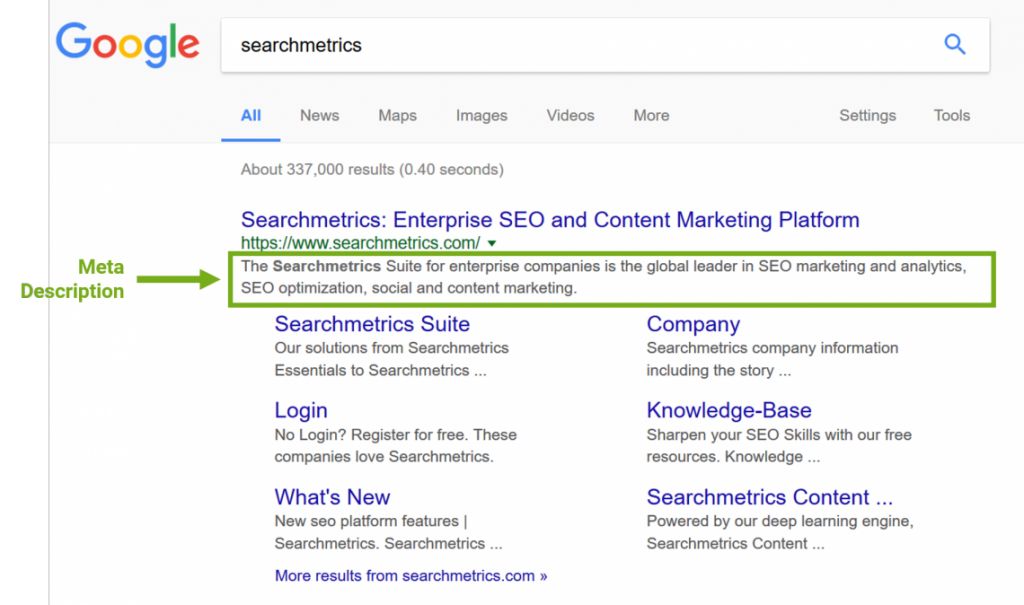
In case you don’t know what that is, let me explain. Title tag and Meta description is the bits of HTML code under the header of a website. Basically, it carries the purpose of making your content understandable by search engines. Without title tag and meta descriptions, search engine will find it harder to make sense of your website’s content. And this, makes it hard to build traffic to your blog.
This is an example of a title tag and meta description. The title of the article is the title tag, and the description below is the meta description.
So how do you insert a title tag and meta description into your blog? There are multiple ways to do it, but the easiest by far will be by installing a plugin. On our side, we recommend using the Yoast SEO Plugin.
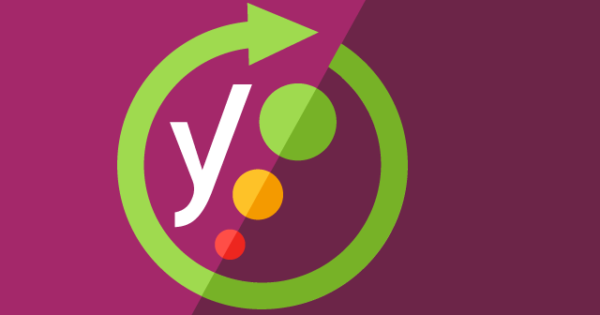
This plugin allows you to SEO each and every page of your website, including your posts according to your specifications. When you first activate the plugin, you will see that there will be a Yoast menu for you at the bottom of each page’s back end.
Here’s where the magic happens. You can edit your title tag and your meta description here, and it even tells you when it’s too long or too short.
If the bar is green, then it’s the perfect length for the Google bot to crawl.
Yoast also allows you to set a focus keyphrase for each of your page. This will help you to be ranked on Google for that specific keyphrase.
As you can see in the picture, Yoast also points out your mistakes and tells you how to correct it.
With Yoast, you can be sure that your page is fully optimized for SEO, which in turn will help you get visitors.
· H1 Tags
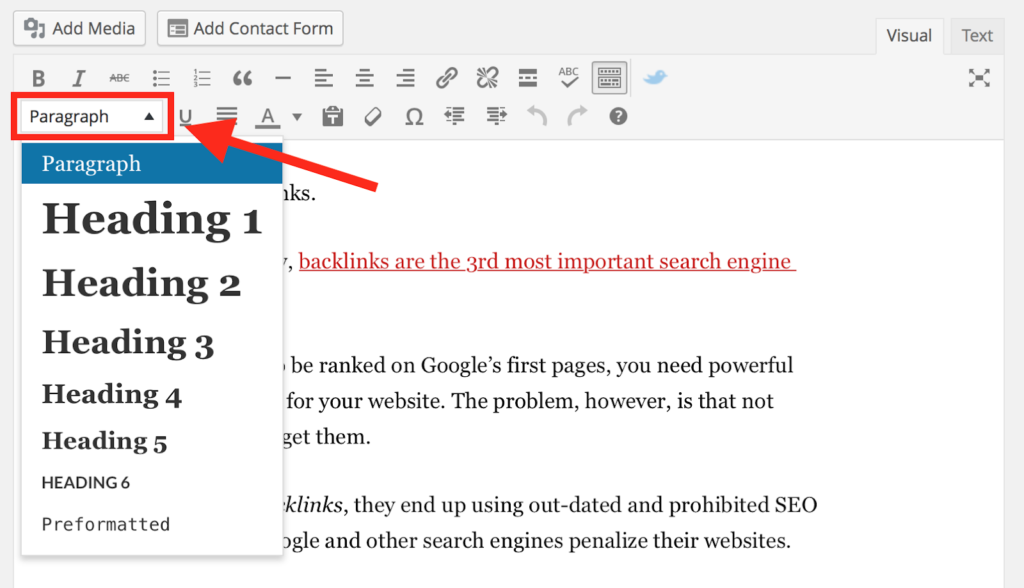
After editing the title tag and meta description of all of your blog’s page, the next thing you should be looking at is the H1 tags. But what exactly is a H1 tag?
Basically, a H1 tag is a specific piece of code that is wrapped around a text. Originally, what this used to mean is that the text with the H1 tag is the largest text in a page, which is normally the title. But thanks to advancement in coding technologies and languages, this is no longer necessarily the case.
Instead, nowadays a H1 tag around a text indicates that it is the most important text in the page.
When it comes to SEO, you have to understand that the page you are looking at is not the same thing as what the Google crawler is looking at. The Google crawler sees your page as nothing more than lines of code, which makes H1 tags super important and relevant. You see, H1 tags help tell the Google crawler that this line of text is more important than the rest.
Therefore, you not only need to ensure that your title is wrapped with the H1 tag, you also have to make sure that your title contains your keyword. This will make it easier for the Google crawler to see that your page is relevant to that keyword. And it will also help build traffic to your blog.
So how exactly do one get the H1 tag on the title? Most WordPress themes ensure that your main heading is H1 tagged automatically, so you don’t have to worry about that.
When using WordPress, the title of your post/page is automatically detected as H1.
But if your theme does not provide that or you’re not using WordPress, then you need to manually add the code to your page yourself.
Word of warning though, a title with H1 tag and keyword rich might be helpful in attracting the Google crawler, but it doesn’t do much for the human visitors. So, you have to craft your title in an exciting, snappy way as well so that it will attract visitors to your page.
· Multimedia (Alt-text)

Let’s face it, huge blocks of text without any pictures are not really attractive to people. So to liven up your content and help build traffic to your blog, why not add in some multimedia?
These multimedia can be videos, or images, or even GIFs if you want to. The only thing you limiting you is your imagination. It’s your website, so do whatever you like with it!
The only catch is that you have to ensure that your multimedia is high quality. No one likes terrible, choppy videos or grainy pictures. There are multiple ways you can get high quality videos and images. You can either create your own, hire someone to make it for you on sites like Fiverr and Upwork, or you can even get high quality stock images on sites like Pexels and Unsplash.
But as is with everything else on this article, we’re focusing on how you can tweak your page for SEO purposes. With multimedia, SEO tweaking is easy; by tweaking the alt-text.
What is alt-text actually? Well, alt-text is basically a piece of text that describes the picture. Simple as that. But why is it important? It first originated as a foray to accessible web design by web designers. The reasoning behind alt-text is that even if the picture can’t be loaded due to connection issues or the visitor simply can’t see them, alt-text is there to provide some reasoning to the picture.
So how does this connect to better SEO for your site?
Remember when I said that the Google crawler bot sees your page as nothing more than lines of code? Well that means it also can’t see pictures. Hence, the bot needs alt-text, to help it make sense of every bit of multimedia you post.
Furthermore, if you use your keyphrase on alt-text, it will help further signify to Google crawler that this page is relevant to that keyphrase.
In this page, the keyphrase I’m aiming to get ranked for is “what is affiliate marketing”. Therefore, I label the alt-text with the keyphrase, and Google will see this image as being relevant to the keyphrase.
· Links In Content
Moving on the next part of your page that you can tweak for SEO, we’ll be looking at links. In rough layman’s term, a link is something that you can click on the page that will lead you to another page. This can be a button, text, or even images.
There are three types of links; Internal, External, and Inbound links. Let’s discuss all three of them.
· Internal Links
Internal links basically means links that leads to another page of your website. This is the type of links used to link your pages together, and this help the Google crawler to crawl through your blog.
This helps in two ways. First, if you mention something that you have already covered in a more extensive manner in your other pages, you can link to that page.
Here’s an example;
In this article, I mentioned ‘generating passive income’. Now I know that my homepage has a ton of informative articles about the topic, so I linked that keyphrase to my homepage. This helps Google to understand that not only these pages are interlinked, the linked page is also relevant to the keyphrase I used.
So how does this help in SEO? There are two main reason why internal links are important. First, interlinking your page makes it easier for the Google crawler to crawl through your website, therefore making your website of a higher quality in it’s eyes. Secondly, it helps attract visitors to other parts of your website.
· External Links
After internal links, we have external links. If internal links are links that lead to another page in your website, an external link is a link that leads away from your website. Usually, this link leads to another website.
Here’s an example,
Here, you can see that the phrase ‘hosting services’ is linked to another website.
What is the purpose of an external link? Number one, it helps your visitors if they need further information on a topic, just like internal links. Secondly, it also helps your SEO. Creating external links to other websites will cause Google to associate your website with the other websites. This is very helpful especially when the linked website is seen as a higher authority on the topic.
And of course, it might also lead to the third type of link from their website which is called;
· Inbound Links
In terms of SEO and how to build traffic to your blog, this link is the best and the most impactful links your website can have. Not only it generates visitors from other websites, when it comes from a website with high authority on a subject, it also signals to Google that your website is also a high authority on the matter. This is a massive help in SEO.
But of course, being the most prized type of link in SEO also means that it is the hardest to acquire. The best way to get these type of links is to build a rapport with other bloggers and other sites. So build as many links as possible for your websites and it’s page, as it’s a really helpful tool for SEO.
2. Site Structure
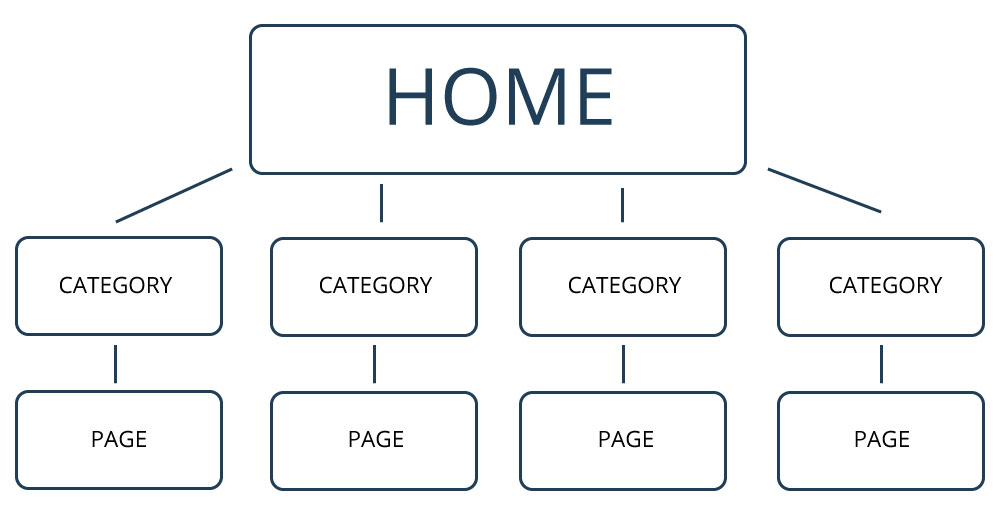
For the uninitiated, a site structure basically means how you organize your website’s content. Most websites have a collection of content on a variety of topics that might or might not be related, which is presented in pages or posts. A site structure is basically how you group, organize, and present this content to your visitors.
Now although site structure might seem like more of an aesthetic fix, it’s also essential for SEO. The reason being that the site structure helps Google determine which of the pages in your website is more important. Loosely speaking, if your site structure is good, then users will have an easier time navigating your website, and it will be easier for Google to index the site.
So in pursuing better SEO for your site, let’s talk about the two things you can tweak in your site structure.
– Navigation Menus
If your website still doesn’t have a navigation menu, then I implore you to add one. Now. Right now. Go over to any website in the world, any quality website, and I assure you that almost every single one of them has their own navigation menus.
The reasoning behind this is simple. It’s because most Internet users are lazy. Let’s face it. Internet users are lazy, and they won’t jump through hoops just to get to your content. Which is why you need to present it all in a structured manner for them to navigate through. You will find that this is the best way to build traffic to your blog.
Hence, the need of a navigation menu. A navigation menu allows a visitor to go to the specific page of your website that they want to get to.
In this example, you can see the navigation menu for this website on the top right hand corner of the website. All the major categories of their post is there, and it’s easy for visitors to go directly to where they want to go.
– URL Structure
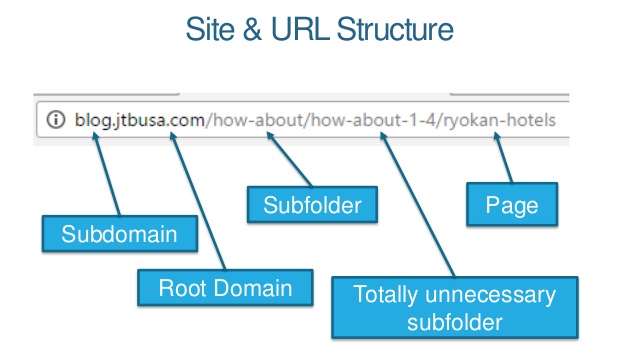
To further help with navigation through a website and the website’s SEO, let’s talk about URL structure next.
URL structure is simple. It literally means the what is in your address box when you’re on a page of your website. Sometimes, you might not notice but your URL structure might be nonsensical non-words, and gibberish.
You want to change that so that it makes more sense and has actual relation to your content.
Look at this example.
Here you can see that the URL structure is set to be “what is affiliate marketing”
As you can see in the permalink, the URL is set to be clickwealth.my/affiliate-marketing/what-is-affiliate-marketing. This shows what the content is going to be about, and it makes sharing your content easier for your visitors.
With this, your content is known by your visitors, even without opening the link. Which in turn, will help you build traffic to your blog.



